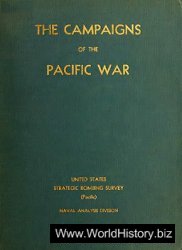Privateering, or the state-sanctioned act of piracy, was among the most significant contributions made by British colonies in North America to Great Britain during the 18th century. Privateering, which entailed patrolling the ocean for enemy merchant vessels to capture and loot, was a very lucrative business, especially for owners and ship captains. Affluent men were the ones most likely to seek letters of marque, while poorer men performed the hard, dangerous work on board the ships. A letter of marque legitimized privateers, dividing them from the ranks of pirates by placing their vessels under the king’s flag. The seized ships and cargoes were brought into port to be legally “condemned” before an Admiralty Court. This process ensured that the Crown and the grantors of the commission would receive their entitled shares. The ship’s owners and the captain (often part owner) received 40 shares each, while each privateersman received only a single share. This seemingly small portion of the spoil was still often better than the small wages earned on board a Royal Navy or merchant ship, and life at sea often was of a higher quality on a privateer. The shares, though small, still provided a powerful incentive, making privateer crews easy to obtain.
The near-continual state of warfare among Britain, France, the Netherlands, and Spain throughout the 17th and 18th centuries made privateering one of the most profitable ventures for enterprising colonial investors and provincial governors, and it provided a good living for seamen. Privateering, however, was also quite risky. While investors were sometimes able to balance the risk and benefit that came with financial speculation, those who participated aboard privateers took on considerable risk. The fate of men captured while privateering included impressment, imprisonment, and sometimes death.
When England’s rivalry with Spain evolved into outright warfare in the late 1500s, this legal version of piracy emerged with the rise of English “Sea Dogs.” The English need for bases, from which to attack Spanish shipping, spurred both the creation and the demise of such colonial settlements as Roanoke, Jamestown, and the Popham Colony in Maine. As colonies began to thrive, trade increased, incorporating British North America into the fold of Atlantic trade. In an environment of continual trade wars, privateering arose as the legal method for plundering a rival’s supply lines and of interrupting an enemy’s participation in the growing global economy. Of course, English and colonial merchants also faced depredations from foreign privateers, resulting in the loss of significant profits and goods.
While volleyed attacks by ships increasingly distinguished methods of warfare, privateers were not inhibited by this mode of battle to the same degree as were nations in general. For example, Captain William Kidd of New York was granted a privateering commission in 1695 near the end of King William’s War (1689-97). The English navy sent Kidd to hunt for pirates in the Red Sea, but he turned pirate himself. Still, Kidd kept a privateer captain’s 40 shares of the treasure, when most pirate captains would receive only two shares. Kidd’s faltering loyalty enabled him to follow the path most profitable for himself.
The poorly defined distinction between piracy and privateering, as exemplified in Kidd’s career, and the disruption of trade convinced British authorities that piracy had to be crushed and privateering brought under strict control. The wartime necessity for privateering, however, was too great to stifle the number of privateer commissions issued. Queen Anne’s War (1702-13) and the War of Jenkins’ Ear (1739-43) witnessed the continued deployment of thousands of privateers to attack enemy ships from American colonies. The end of these conflicts forced many unemployed former privateersmen to turn to piracy.
Privateers were sleek, fast ships that were often built in the colonies. They usually preyed on the slower and more cumbersome merchant vessels, which characterized these types of ships throughout the 17th and 18th centuries. Merchant ships typically sailed lightly armed and with small crews, as space for cargo was the top priority. Moreover, privateersmen, who only received shares when successful, were far more motivated than the poorly paid crews on merchant ships.
Among the British North American colonies, the cities of New York and Newport were the leading centers of privateering, although almost all ports were involved in privateering to some extent. During war, the profitability of privateering peaked as did the number of available privateersmen. Privateering offered benefits that included the greatest incentives for sailors, including legal safeguards, protection from being pressed into the Royal Navy, and some of the highest returns on commissions. Many privateers may have used the excuse of patriotism to justify their employment on board a privatized warship; however, the ease with which they switched sides suggests profit as a more compelling force behind their actions. Whatever their motivation to engage in privateering, war produced the conditions to make state-sanctioned piracy among the most popular career choices available to lower-class men, enough so that they were enticed onto the ocean in growing numbers. During King George’s War (1744-48), for example, captured prizes escalated to an estimated worth of ?17,000,000. Six years later, the Seven Years’ War (1754-63) saw more privateers than any previous conflict, as English and American colonial vessels harried the French ships bound to and from France’s colonial holdings. Although quick profit may have been the primary goal of privateersmen, on the high seas and in foreign ports they sometimes formed a literate, multilingual, cultured working-class group. The skills acquired by these British North American privateers were put into effective action once again during the American War for Independence and the War of 1812.
Further reading: James G. Lydon, Pirates, Privateers and Profits (Upper Saddle River, N. J.: Gregg Press, 1970); Marcus Rediker, Between the Devil and the Deep Blue Sea: Merchant Seamen, Pirates and the Anglo-American Maritime World, 1700-1750 (Cambridge: Cambridge University Press, 1987); Jan Rogozinski, Pirates! Brigands, Buccaneers, and Privateers in Fact, Fiction, and Legend (New York: Facts On File, 1995); Carl E. Swanson, Predators and Prizes: American Privateering and Imperial Warfare, 1739-1748 (Columbia: University of South Carolina Press, 1991).
—Stephen C. O’Neill and Melissah J. Pawlikowski




 World History
World History









